 W
WThe Albert Dock Seamen's Hospital was a hospital provided by the Seamen's Hospital Society for the care of ex-members of the Merchant navy, the fishing fleets and their dependents.
 W
WArnaudija Mosque built in 1594, is a large mosque in Banja Luka, Bosnia and Herzegovina before it was destroyed by the Army of Republika Srpska on 7 May 1993.
 W
WThe Blake Pier was a ferry pier in Central, Hong Kong. It was named after Sir Henry Arthur Blake, the twelfth governor of Hong Kong.
 W
WBogany Flats was a multi-storey block of flats in Castlemilk, Glasgow. The flats were built in 1966 by George Wimpey Ltd, the last of the nine tower blocks Whimpey built throughout the city in the sixties. The building was 20 stories high and contained 114 dwellings; locally it was known as 'The Hilton'.
 W
WBurniston Barracks was a military installation on Burniston Road in Scarborough, North Yorkshire, England.
 W
WCathedral of Saint Francis de Sales in Oakland was an 1893 church, which served as the cathedral of the Roman Catholic Diocese of Oakland in Oakland, California from 1962 until it was damaged in the 1989 Loma Prieta earthquake.
 W
WThe Dunes Hotel was a hotel and casino on the Las Vegas Strip in Paradise, Nevada, that operated from May 23, 1955 to January 26, 1993. Designed by architects John Replogle, Robert Dorr Jr., Milton Schwartz and Maxwell Starkman, it was the tenth resort to open on the Strip. Bellagio now stands on the former grounds. The Dunes golf course is now occupied by parts of Park MGM, New York-New York, CityCenter, Cosmopolitan, and T-Mobile Arena.
 W
WThe Eagleswood Military Academy was a private military academy in Perth Amboy, in Middlesex County, New Jersey, United States, which served antebellum educational needs.
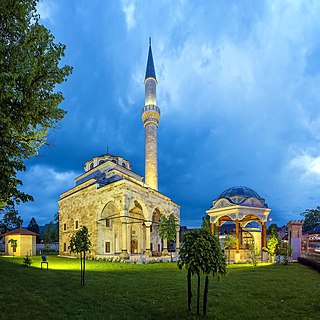 W
WFerhat Pasha Mosque, also known as the Ferhadija Mosque, is a mosque in the city of Banja Luka and one of the greatest achievements of Bosnia and Herzegovina's 16th century Ottoman Islamic architecture. The mosque was demolished in 1993 at the order of the authorities of Republika Srpska, and was rebuilt and opened on 7 May 2016.
 W
WHutchesontown C was a Comprehensive Development Area (CDA) of an area of Hutchesontown, a district in the city of Glasgow, Scotland. Its centrepiece were two Brutalist 20-storey slab blocks at 16-32 Queen Elizabeth Square, designed by Sir Basil Spence and containing 400 homes. Acclaimed by architects and modernists, the flats became riddled with damp and infestations, which could not be cured even with a major renovation in the late 1980s. They were demolished in 1993, with the demolition contractor using twice the amount of explosive necessary to destroy the building, killing a female spectator in the process.
 W
WJames Russell Lowell Elementary School was located at 4501 Crittenden Drive in an area known as Highland Park, Louisville. Construction began in 1916 on the original portion of the building that was known as Highland Park School and had the only remaining bell tower on a Public School in Louisville, Kentucky. Subsequent construction began in 1931 and the school became known as Lowell. The school was later demolished in 1993.
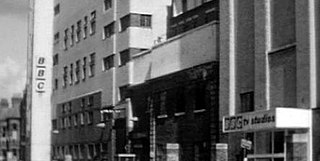 W
WLime Grove Studios was a film, and later television, studio complex in Shepherd's Bush, West London, England.
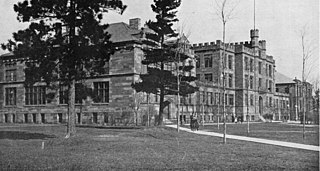 W
WThe Longyear Hall of Pedagogy was an academic building located on Presque Isle Avenue, on the campus of Northern Michigan University in Marquette, Michigan. It was designated a Michigan State Historic Site in 1972 as part of the Kaye Hall Complex, and individually listed on the National Register of Historic Places in 1980, but was demolished in 1993.
 W
WThe McDannald Homestead was a house in Columbus, Ohio. It was built c. 1850 and was listed on the National Register of Historic Places in 1978. The house was one of the largest and best preserved rural residential buildings in Franklin County. The house was a sanctuary stop on the Underground Railroad. It was demolished by Allstate on September 24, 1993, as the organization had planned to build a commercial office park there. Then-city councilor Michael Coleman expressed that it could have been saved if added to the Columbus Register of Historic Properties, which had just added demolition restrictions that July.
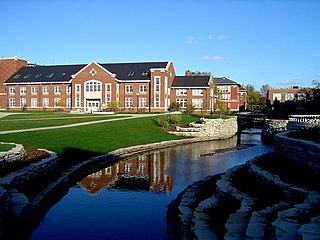 W
WThe Metal Shop, also known as Aeronautical Lab B, was a historic building located at 1022 South Burrill Avenue on the campus of the University of Illinois at Urbana–Champaign. Built in 1895, the building served as a metal shop for the university's architecture and engineering students. Nathan Clifford Ricker, who later served as Dean of the College of Engineering, designed the building. The design was more functional than Ricker's other work on the campus; its only decorative element is a brick arched loggia in front of the entrance.
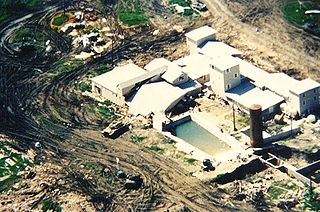 W
WThe New Mount Carmel Center was a large compound used by the Branch Davidians religious group in the Axtell area outside Waco, Texas, United States. The Branch Davidians were a breakaway sect from Sheperd's Rod, established by Benjamin Roden in 1959 and then led by David Koresh starting in the 1980s. Named after the Biblical mountain Mount Carmel in northern Israel, it was the site of the 51-day Waco siege. The siege began on February 28, 1993, when federal agents attempted to execute a warrant and arrest some Davidians living inside. A subsequent firefight left four ATF agents and six Davidians dead. At the end of the siege, on April 19, 1993, a fire burned through most of the compound, killing 76 Branch Davidians.
 W
WPyrmont Power Station was an electricity generating plant located in the Sydney suburb of Pyrmont, New South Wales.
 W
WRutland Mill was a cotton spinning mill on Linney Lane, in Shaw and Crompton, Greater Manchester, England. It was built by F. W. Dixon & Son in 1907 for the Rutland Mill Co. Ltd. It was taken over by the Lancashire Cotton Corporation in 1935. By 1964, it was in the Courtaulds Group. In the late 1980s, as Courtaulds moved operations to other parts of the world, the mill was bought by Littlewoods who demolished it and replaced it with a new automated storage warehouse.
 W
WSamuel Elmore Cannery was a U.S. National Historic Landmark in Astoria, Oregon that was designated in 1966 but was delisted in 1993.
 W
WThe San Carlos Hotel, sometimes called the Hotel San Carlos and affectionately dubbed the Gray Lady of Palafox, was a grand and revered hotel in Pensacola, Florida, for much of the 20th century.
 W
WThe Santa Fe Depot was a historic railroad station in Albuquerque, New Mexico, which burned down in 1993. It was originally built by the Atchison, Topeka and Santa Fe Railway in 1902 along with the neighboring Alvarado Hotel. After the hotel was razed in 1970, the depot remained in use by ATSF and then Amtrak passenger trains. The building was listed on the New Mexico State Register of Cultural Properties in 1981 and was designated an Albuquerque Historic Landmark.
 W
WSarles' Tavern, also known as Granite House, was a historic inn and tavern building located at Millwood, Westchester County, New York. It was built between 1814 and 1817 and was constructed of locally quarried granite. It was a two-story, rectangular building with a low pitched gable roof in a restrained Greek Revival style.
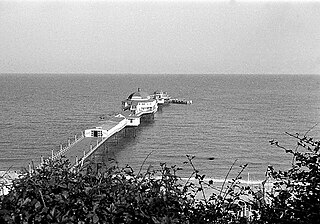 W
WShanklin Pier was a pleasure pier in the town of Shanklin on the Isle of Wight, England. Opened in August 1890 at a length of 1,200 feet (370 m), the pier saw several attractions added during its first few years, such as a bandstand and bathing stage. A pavilion was added in 1901.
 W
WSkarpsno station was a railway station situated at Skarpsno in Oslo, Norway. The station was located 1.90 kilometres (1.18 mi) from Oslo West Station (Oslo V) along what was initially the Drammen Line and now is the Skøyen–Filipstad Line. Skarpsno was a local station served by the Oslo Commuter Rail and featured an island platform on an elevated segment.
 W
WStari Most, also known as Mostar Bridge, is a rebuilt 16th-century Ottoman bridge in the city of Mostar in Bosnia and Herzegovina that crosses the river Neretva and connects the two parts of the city. The Old Bridge stood for 427 years, until it was destroyed on 9 November 1993 by Croat paramilitary forces during the Croat–Bosniak War. Subsequently, a project was set in motion to reconstruct it; the rebuilt bridge opened on 23 July 2004.
 W
WStrand Theatre was a historic theater located at Ithaca in Tompkins County, New York. It was built in 1916–1917 in the Tudor Revival style.